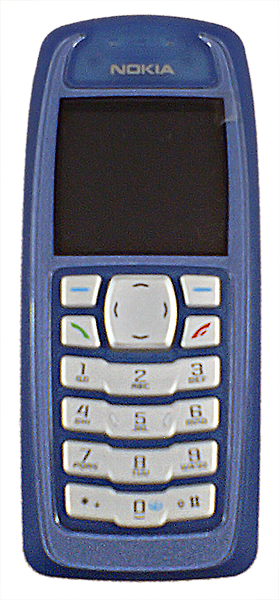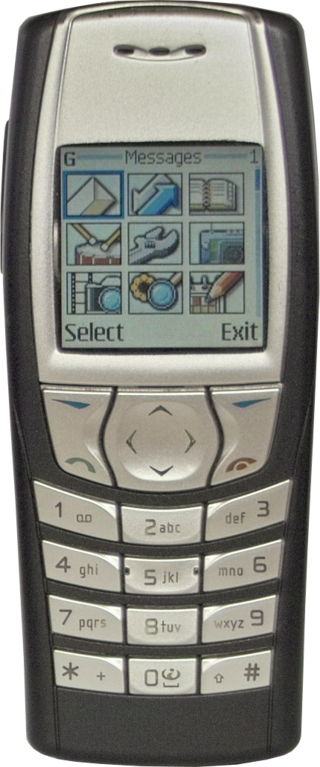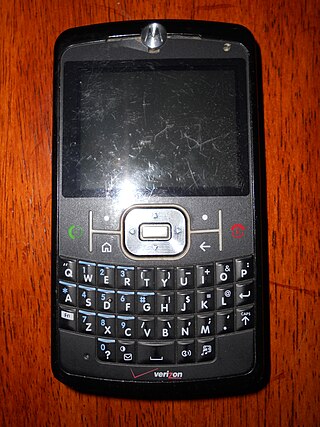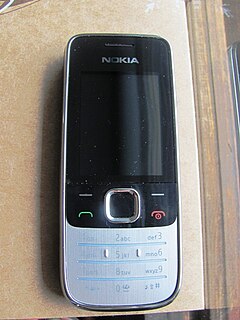Related Research Articles

Code-division multiple access (CDMA) is a channel access method used by various radio communication technologies. CDMA is an example of multiple access, where several transmitters can send information simultaneously over a single communication channel. This allows several users to share a band of frequencies. To permit this without undue interference between the users, CDMA employs spread spectrum technology and a special coding scheme.

Short Message/Messaging Service, commonly abbreviated as SMS, is a text messaging service component of most telephone, Internet and mobile device systems. It uses standardized communication protocols that let mobile devices exchange short text messages. An intermediary service can facilitate a text-to-voice conversion to be sent to landlines.
Short Message Peer-to-Peer (SMPP) in the telecommunications industry is an open, industry standard protocol designed to provide a flexible data communication interface for the transfer of short message data between External Short Messaging Entities (ESMEs), Routing Entities (REs) and SMSC.

Time-division multiple access (TDMA) is a channel access method for shared-medium networks. It allows several users to share the same frequency channel by dividing the signal into different time slots. The users transmit in rapid succession, one after the other, each using its own time slot. This allows multiple stations to share the same transmission medium while using only a part of its channel capacity. Dynamic TDMA is a TDMA variant that dynamically reserves a variable number of time slots in each frame to variable bit-rate data streams, based on the traffic demand of each data stream.

A ringtone, ring tone or ring is the sound made by a telephone to indicate an incoming call. Originally referring to and made by the electromechanical striking of bells, the term now refers to any sound on any device alerting of a new incoming call—up to and including recordings of original telephone bells.

The Nokia 3510 is a mobile phone for the GSM network, introduced by Nokia on 12 March 2002. The phone was the first Nokia phone to bring GPRS internet services to the mass market. It was also the first Nokia phone to ship with Beatnik's miniBAE engine, allowing for playback of polyphonic ringtones.

The Nokia 3100 is a triband-GSM mobile phone announced on 17 June 2003 as an entry-level phone from Nokia and released in September 2003, designed primarily for the newer generation of marketing audience.
Enhanced Messaging Service (EMS) was a cross-industry collaboration between Samsung, Ericsson, Motorola, Siemens and Alcatel among others, which provided an application-level extension to Short Message Service (SMS) for cellular phones available on GSM, TDMA and CDMA networks.

The Nokia 6610 is a handset by Nokia that uses the Series 40 platform and J2ME (Java). The device features text and picture messaging, a WAP browser, Stereo FM radio, Polyphonic ringtones and a 128x128, 4096-colour display. It is essentially the same phone feature-wise as the Nokia 7210, the 6610 being a more business-oriented version with a more conservatively-styled face plate and keypad layout, in contrast with the fashion-oriented 7210. It was introduced at CommunicAsia in June 2002 and was released in Q3 of the year.

The features of mobile phones are the set of capabilities, services and applications that they offer to their users. Mobile phones are often referred to as feature phones, and offer basic telephony. Handsets with more advanced computing ability through the use of native code try to differentiate their own products by implementing additional functions to make them more attractive to consumers. This has led to great innovation in mobile phone development over the past 20 years.
Mobile content is any type of web hypertext and information content and electronic media which is viewed or used on mobile phones, like text, sound, ringtones, graphics, flash, discount offers, mobile games, movies, and GPS navigation. As mobile phone use has grown since the mid-1990s, the usage and significance of the mobile devices in everyday technological life has grown accordingly. Owners of mobile phones can now use their devices to make photo snapshots for upload, twits, mobile calendar appointments, and mostly send and receive text messages, listen to music, watch videos, take mobile pictures and make videos, use websites to redeem coupons for purchases, view and edit office documents, get driving instructions on mobile maps and so on. The use of mobile content in various areas has grown accordingly.

Nokia 8210 is a mobile phone by Nokia, announced on 8 October 1999 in Paris. At the time, it was the smallest, lightest Nokia mobile phone on the market, thus its selling point was based on its design and customization, with removable Xpress-on covers. Six differently coloured Xpress-on covers are available, as well as many third-party ones.

The Motorola StarTAC, first released on January 3, 1996, is often assumed to be the first ever clamshell (flip) mobile phone. Technically, however, NEC had been releasing flip phones on NTT Docomo's PDC Mova network long before 1996, namely the TZ-804 and TZ-1501, both respectively launched in 1991 and late 1994. Another early precursor of this form factor was the Grillo, which was designed in Italy by Richard Sapper and Marco Zanuso in 1965. The StarTAC is the successor of the MicroTAC, a semi-clamshell design first launched in 1989. Whereas the MicroTAC's flip folded down from below the keypad, the StarTAC folded up from above the display. In 2005, PC World named the StarTAC as the 6th Greatest Gadget of the Past 50 Years. The StarTAC was among the first mobile phones to gain widespread consumer adoption; approximately 60 million StarTACs were sold.
The Nokia 8850 is a mobile phone handset manufactured by Nokia. It was a light alloy-bodied enhanced version of Nokia 8210 model with slider protection of the keypad and white lighting of the keypad and screen. The 8850 is considered to be an un-repairable phone, thus resulting in very few active handsets in the market. Today it remains a collector's item. It also came in gold. It was introduced as a successor of an earlier model, the chrome phone Nokia 8810.
Smart messaging is a proprietary service developed by Nokia used for the sending and receiving of various digital media via SMS.

The Samsung SCH-u470, or Juke and Verizon Wireless Juke, is a mobile phone offered exclusively by Verizon Wireless. It was announced on 2 October 2007, and released that same year on Q4 in three colors: red, teal, and navy (blue). The phone is a music player when closed, and can be swiveled for use of the mobile phone. It also has a VGA-resolution camera with a special "night shot" mode for taking photos in low-light conditions.

The Motorola Q9c is a Windows Mobile 6 smartphone, a slim device with a similar style to Motorola's MOTORAZR.

The Nokia 2730 classic is a Nokia Quad-band GSM/UMTS 3G cell phone that includes a camera, FM radio, Bluetooth, music and video player, as well as several internet-based applications.

The LG Cosmos is a slider mobile phone made by LG Electronics. The phone is available in both a touch screen and non-touch screen model. It became available on Verizon Wireless in Q1 2010, and was replaced by LG Cosmos 2 in July 2011. The phone has 1.3-megapixel camera, VZ Navigator, Voicemail, Media Center, QWERTY keyboard and SMS and MMS messaging.
GSM 03.40 or 3GPP TS 23.040 is a mobile telephony standard describing the format of the Transfer Protocol Data Units (TPDU) of the Short Message Transfer Protocol (SM-TP) used in the GSM networks to carry Short Messages. This format is used throughout the whole transfer of the message in the GSM mobile network. In contrast, application servers use different protocols, like Short Message Peer-to-Peer or Universal Computer Protocol, to exchange messages between them and the Short Message Service Center (SMSC).
References
- ↑ "SCKL format". www.smssolutions.net. Retrieved 2022-12-06.